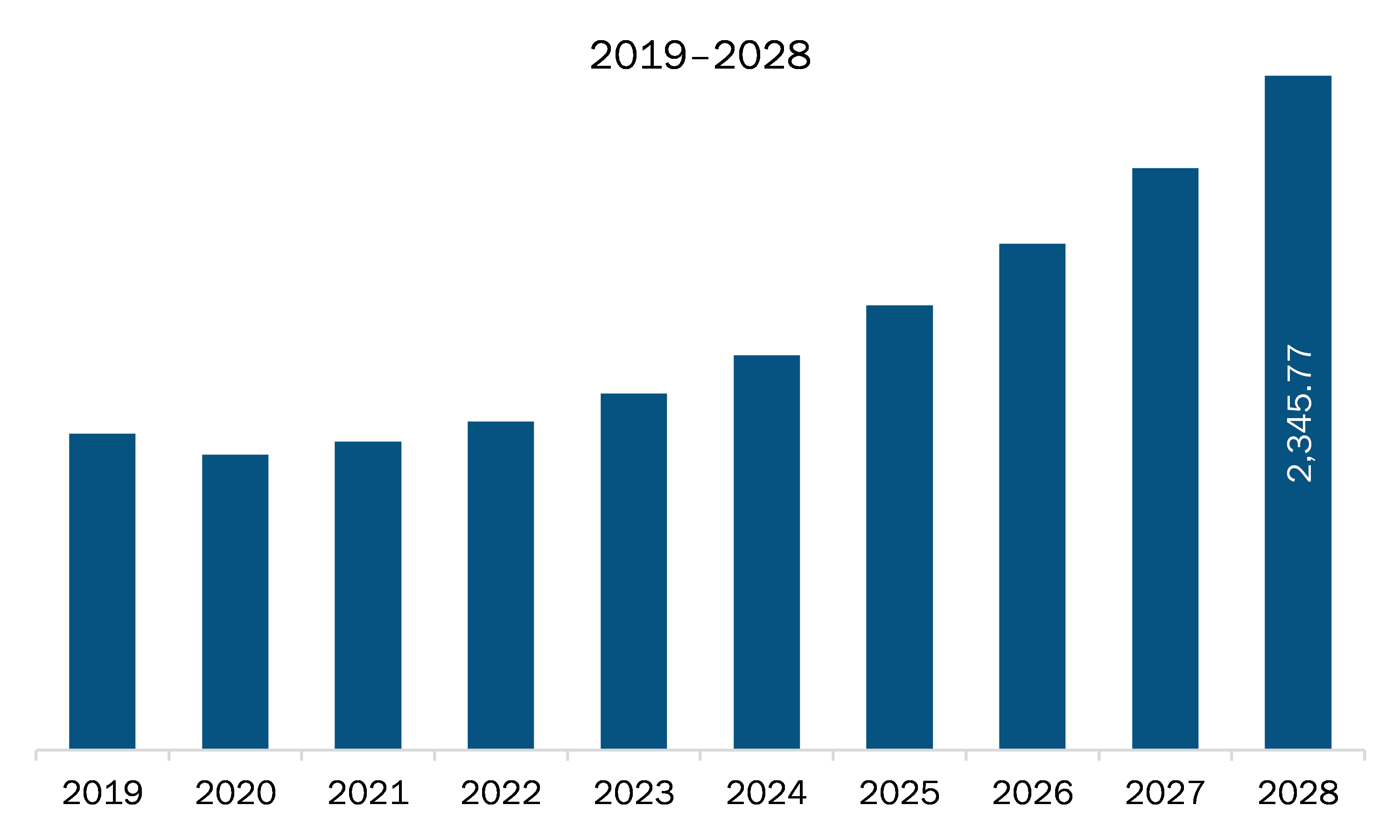The electronic toll collection system market in APAC is expected to grow from US$ 1,072.94 million in 2021 to US$ 2,345.77 million by 2028; it is estimated to grow at a CAGR of 11.8% from 2021 to 2028.
Australia, China, India Japan, and South Korea are major economies in APAC. Significant Investment in mobile and satellites-based GPS technologies is increasing which is the major factor driving the growth of the APAC electronic toll collection system market. The commercialization of global positioning systems (GPS or GNSS) has substantially broadened its scope of application in various daily activities. For instance, the use of GPS systems installed onboard vehicles could also be utilized for toll collection purposes thereby effectively eliminating the need for any tolling infrastructure or system requirements. Moreover, other benefits such as low cost per transaction, maintainability, accessibility to web-based account and no infrastructure required for integration of new route among other advantages are expected to drive the GPS based toll collection systems. In addition, the availability of cost of sharing the GPS technology owing to sharing of service also lowers the cost of maintenance and operational costs of this systems. Thus, providing a substantial advantage over the existing toll collection systems. However, the recent growing awareness towards data privacy, data protection regulations and its ability to enforce violation are expected to restrict the penetration of this technology to a wider audience. As a result, the post subsequent improvements in data privacy and protection are achieved and regulated by the government, the technology is expected to provide profitable opportunities for the market players.The COVID-19 outbreak that emerged in China has affected several neighboring countries like India, South Korea, and Japan. The COVID-19 outbreak has significantly affected the electronic toll collection market in 2020. The imposition of a ban on commercial activities disrupted the industrial supply chains in APAC, leading to raw material shortages. As the electronic toll collection includes various semiconductor components such as cameras, and most of these components are produced in China and other countries of APAC, which were severely affected by the COVID-19 pandemic. There are also restrictions on international trade as lockdowns are imposed on the borders of countries. All these factors have limited transportation and traveling on the road, which has limited the growth of the market in the region in 2020. The pandemic has boosted the digital transformation of industries; companies are focusing more on digital platforms to interact with their customers. Also, the companies are expanding their services in other regions. Governments of this region are adopting cashless solutions for electronic toll collections. For instance, the National Payments Corporation of India (NPCI) has initiated the emergence of the digital payment ecosystems in India, launching innovative and successful initiatives such as UPI, IMPS, Bharat Bill Pay, and electronic toll collection through FASTags.However, in 2021, with the release of lockdown restrictions and the beginning of the vaccination process, the shipment of raw materials has started again, and the construction of highways has also begun. This will lead the growth of the electronic toll collection market in the region.
With the new features and technologies, vendors can attract new customers and expand their footprints in emerging markets. This factor is likely to drive the APAC electronic toll collection system market. The APAC electronic toll collection system market is expected to grow at a good CAGR during the forecast period.

- This FREE sample will include data analysis, ranging from market trends to estimates and forecasts.
APAC Electronic Toll Collection System Market Segmentation
APAC Electronic Toll Collection System Market – By Offering
- Hardware Equipment
- Service
APAC Electronic Toll Collection System Market – By Technology
- ANPR
- GNSS
- DSRC
- Others
APAC Electronic Toll Collection System Market – By Application
- Highways
- Urban Area
APAC Electronic Toll Collection System Market, by Country
- Australia
- China
- India
- Japan
- South Korea
- Rest of APAC
APAC Electronic Toll Collection System Market - Companies Mentioned
- Conduent, Inc.
- CONTINUUM ELECTROPRODUCTS LLP
- Efkon GmbH
- Kapsch Trafficcom AG
- Mitsubishi Heavy Industries Machinery Systems, LTD
- QUALIX INFORMATION SYSTEM
- Siemens AG
- Thales Group
Asia Pacific Electronic Toll Collection System Report Scope
| Report Attribute | Details |
|---|---|
| Market size in 2021 | US$ 1,072.94 Million |
| Market Size by 2028 | US$ 2,345.77 Million |
| CAGR (2021 - 2028) | 11.8% |
| Historical Data | 2019-2020 |
| Forecast period | 2022-2028 |
| Segments Covered |
By Offering
|
| Regions and Countries Covered |
Asia-Pacific
|
| Market leaders and key company profiles |
|
- Historical Analysis (2 Years), Base Year, Forecast (7 Years) with CAGR
- PEST and SWOT Analysis
- Market Size Value / Volume - Regional, Country
- Industry and Competitive Landscape
- Excel Dataset
Recent Reports
Testimonials
Reason to Buy
- Informed Decision-Making
- Understanding Market Dynamics
- Competitive Analysis
- Identifying Emerging Markets
- Customer Insights
- Market Forecasts
- Risk Mitigation
- Boosting Operational Efficiency
- Strategic Planning
- Investment Justification
- Tracking Industry Innovations
- Aligning with Regulatory Trends






















 Get Free Sample For
Get Free Sample For